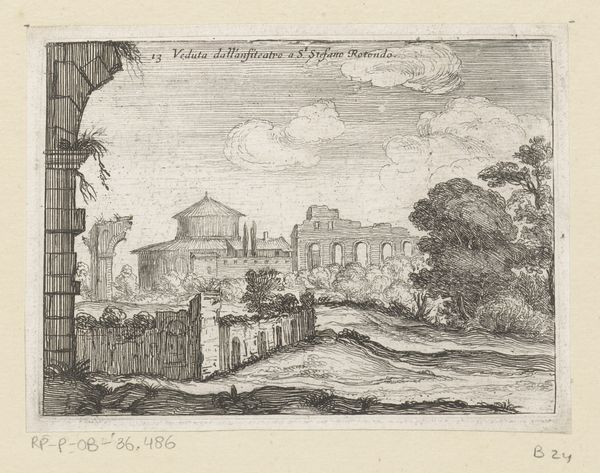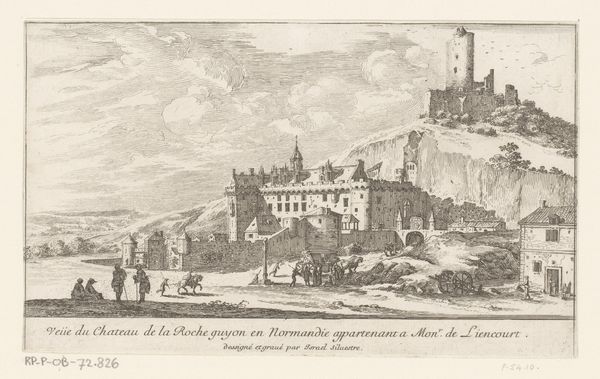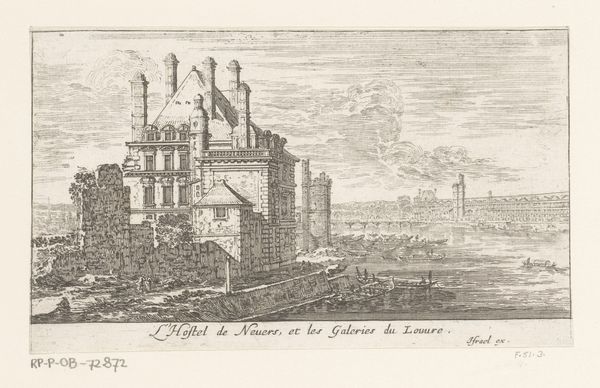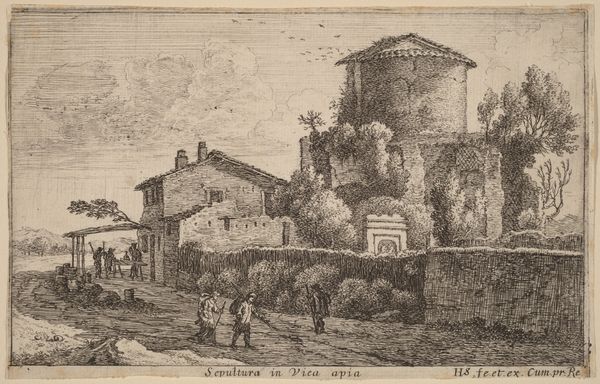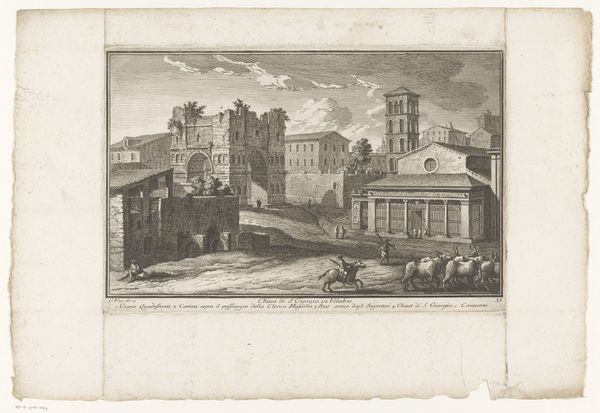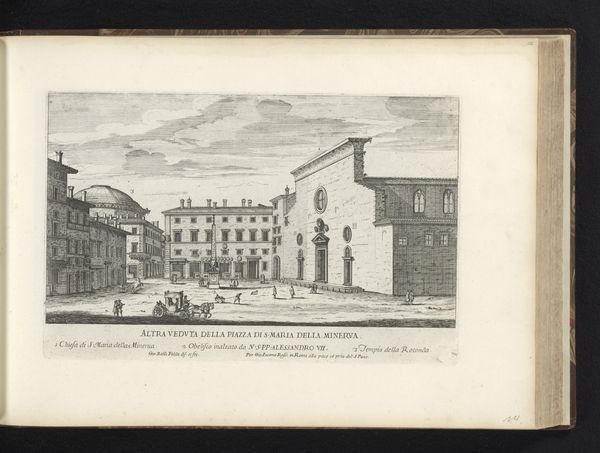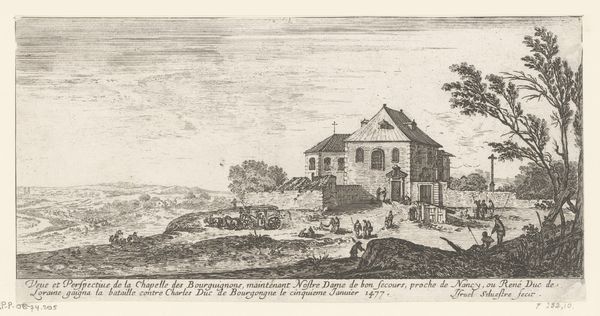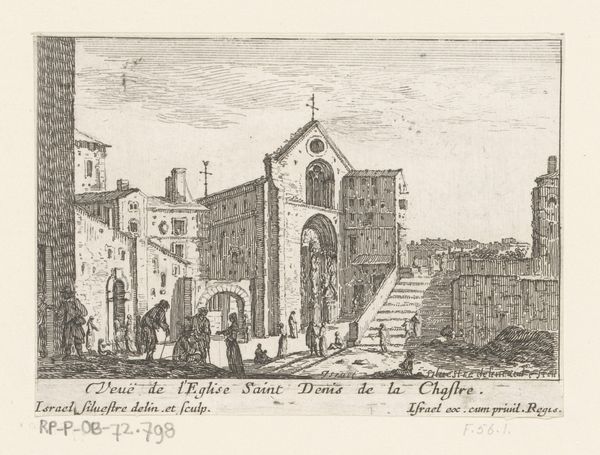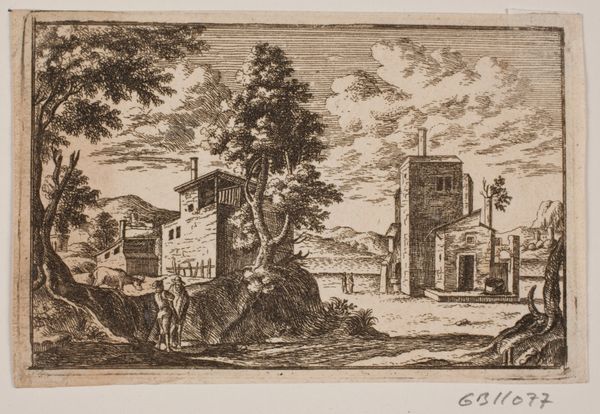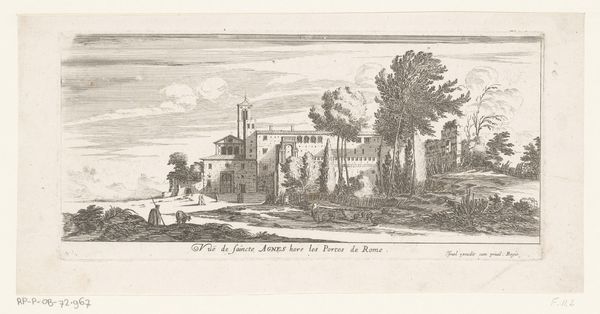
drawing, print, etching, engraving
#
drawing
#
baroque
# print
#
etching
#
landscape
#
perspective
#
form
#
line
#
cityscape
#
engraving
Dimensions: height 80 mm, width 138 mm
Copyright: Rijks Museum: Open Domain
Curator: This little etching just breathes the 17th century to me! The artwork, titled “Gezicht op een brug in Grenoble,” which translates to "View of a bridge in Grenoble", dates back to somewhere between 1631 and 1661, credited to Israel Silvestre. Editor: Instantly, it evokes a sense of faded grandeur, like a slightly worn tapestry. There's a real stillness, despite the architectural detail. The lines are so delicate, almost ephemeral. Does it give you that feeling, like a memory clinging to the paper? Curator: It does. Silvestre really knew how to capture atmosphere. It's interesting, because his work, especially pieces like this one held at the Rijksmuseum, provide snapshots of specific places. More than simple topography, he recorded the image of power by selecting specific vantage points within the cities he portrayed. What he captured here in Grenoble speaks of aristocratic influence in the city's architectural makeup. Editor: Yes! You get this almost stage-like quality, how the artist strategically organizes space, with its blend of detail, dramatic perspective, and a clear ambition to convey more than just geographic data, creating that distinct early modern aesthetic that I find irresistible. Curator: Absolutely. This blend served an audience keen to admire depictions of political clout and refinement. Silvestre’s ability to etch a scene, and present it as a blend of aesthetic object and symbolic assertion, cemented his standing in the history of Baroque artistry. And the print medium allowed wide distribution— Editor: Bringing these visions of grandeur to drawing rooms across Europe, right? This makes you wonder what other quiet assertions of power exist within art still awaiting recognition. It feels good to reflect, no? Curator: Agreed. We're not just observing, we're participating in the ongoing, centuries-old conversation about what we deem important.
Comments
No comments
Be the first to comment and join the conversation on the ultimate creative platform.


